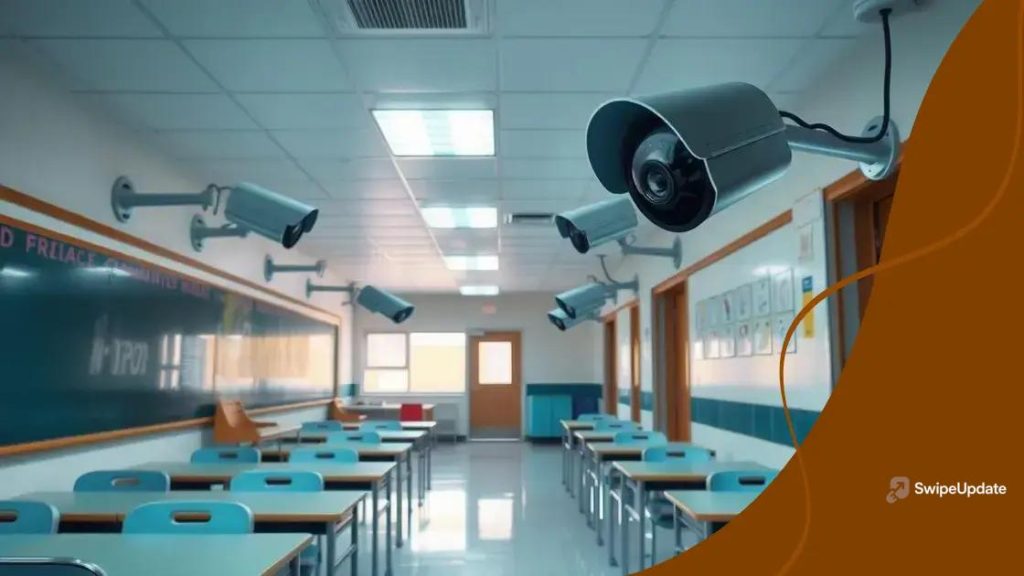School inspection trends: what you need to know

School inspection trends emphasize collaboration, continuous improvement, and technology integration to enhance educational quality and ensure student wellbeing in a rapidly evolving educational landscape.
In today’s educational landscape, school inspection trends play a crucial role in shaping how institutions operate and improve. Have you ever wondered how these trends affect your child’s school experience? Let’s dive into the key insights and implications.
Understanding current school inspection trends
Understanding the current school inspection trends is essential for educators and parents alike. These trends significantly influence how schools operate and the quality of education provided to students. Schools must stay informed to ensure they meet the evolving criteria set forth by inspection bodies.
Key Factors Influencing Inspections
Several key factors are shaping the inspection landscape today. These factors include accountability measures, standards of learning, and stakeholder expectations. Inspections now focus more on student outcomes than ever before.
- Accountability for student performance
- Emphasis on teaching quality
- Community and parental involvement
- Use of technology in assessments
One major trend is the shift towards a more collaborative approach between schools and inspectors. This collaboration ensures that schools not only understand the criteria but also have support in meeting them. As inspections evolve, they increasingly focus on providing constructive feedback that schools can use to enhance their practices.
Impact on School Operations
The influence of these trends can be seen in various aspects of school operations. For instance, many schools are enhancing their teaching strategies to align with the inspection standards. By understanding these trends, educators can anticipate what inspectors will prioritize.
In addition, schools are incorporating ongoing professional development for teachers. This helps staff stay up-to-date with the best practices and innovative teaching methods necessary for effective inspections. Adapting to these trends promotes a culture of continuous improvement.
Moreover, data-driven decision-making is becoming crucial. Schools now utilize data to assess performance and identify areas needing enhancement. With this approach, they can be proactive rather than reactive regarding inspections.
Impact of inspections on educational quality
The impact of inspections on educational quality is significant and often serves as a major motivation for schools to improve. Inspections help identify strengths and weaknesses, giving schools valuable feedback on their performance.
Enhancing Teaching Standards
One of the primary effects of inspections is the enhancement of teaching standards. When schools know they will be inspected, teachers often put greater effort into their lesson plans. This leads to a more engaging learning environment. Additionally, the pressure to perform can encourage teamwork among educators. They collaborate to share effective teaching strategies.
- Improved lesson planning
- Increased collaboration among teachers
- Focus on student engagement
- Investment in professional development
Inspections can also lead to a focus on individual student outcomes. More schools are adopting data-driven approaches to monitor student performance. These approaches help educators tailor their teaching to meet student needs. As a result, students receive more personalized attention and support.
Promoting Accountability
Accountability is another critical aspect of inspections. When schools are aware that their performance will be evaluated, it fosters a culture of responsibility among staff. This encourages everyone to work towards common goals. Teachers are more committed to helping students achieve their best, knowing their efforts are being assessed.
This accountability not only impacts teachers but also affects students. Students tend to perform better when they recognize that their work is being monitored. This can lead to improved grades and overall satisfaction with their education.
Moreover, inspections can influence curriculum development. Schools often adjust their curricula to align with inspection criteria. This ensures that what students learn is relevant and meets educational standards.
How schools can prepare for inspections

Knowing how to prepare for inspections is crucial for schools aiming to demonstrate their quality and commitment to education. By following strategic steps, schools can facilitate a smooth inspection process and effectively showcase their strengths.
Establishing a Strong Leadership Team
A strong leadership team is vital for successful preparation. Administrators should ensure that all staff understands the inspection criteria. Engaging teachers and support staff in the preparation process helps create a unified approach.
- Regular staff meetings to discuss inspection goals
- Setting clear expectations for everyone
- Promoting open communication among team members
- Encouraging feedback on school policies
Involving staff early creates a culture of accountability and awareness, setting a positive tone for the inspection.
Gathering Essential Documentation
Another critical step is organizing all essential documentation. This includes student performance data, lesson plans, and records of professional development. Having these documents readily available allows for a smoother inspection process.
It is also beneficial to maintain a portfolio that highlights the school’s achievements and improvements over time. Inspections often focus on outcomes, so showcasing successes can leave a positive impression.
Preparing classrooms and common areas is equally important. Ensuring that the learning environment is welcoming and conducive to learning can greatly impact the inspectors’ impressions.
Conducting Mock Inspections
Practicing through mock inspections can significantly enhance preparedness. This allows staff to become familiar with the inspection process and to identify areas needing improvement. Mock inspections can include internal teams simulating the role of inspectors.
During these exercises, staff can practice presenting their work and answering questions about their teaching methods. This can help ease anxiety during the actual inspection and promote confidence among teachers.
Role of technology in school inspections
The role of technology in school inspections has grown significantly over the years. Technology not only streamlines the inspection process but also enhances the overall quality of education. It enables schools and inspectors to gather data more efficiently and accurately.
Data Collection and Analysis
One of the key benefits of technology is improved data collection. Schools can now use digital tools to track student performance and gather information on teaching practices. This data allows inspectors to make informed evaluations based on real-time data.
- Digital assessments enhance accuracy
- Automated data reporting saves time
- Data visualization tools help illustrate findings
- Accessible records promote transparency
With better data at their disposal, inspectors can identify trends and areas needing improvement swiftly. This ultimately leads to more effective feedback for schools.
Facilitating Communication
Technology also plays a vital role in facilitating communication between schools and inspectors. Online platforms enable better collaboration and allow for continuous dialogue. This opens the door for schools to ask questions and clarify evaluation criteria.
Additionally, many schools are utilizing video conferencing to engage with inspectors remotely. This not only saves time but also makes the process more convenient for everyone involved.
Professional Development Opportunities
Incorporating technology into inspections also allows for greater professional development opportunities. Schools can access a wealth of online resources and training modules tailored to inspection standards. These resources help teachers and administrators improve their practices based on industry insights and best practices.
Moreover, inspectors can utilize online tools to deliver personalized feedback and suggestions for improvement, making the entire process more constructive.
Future predictions for school inspections
The future predictions for school inspections highlight a shift towards more dynamic and supportive evaluation processes. As the education landscape evolves, inspections are set to become more flexible and focused on collaboration between schools and inspectors.
Increased Emphasis on Continuous Improvement
Future inspections will likely prioritize continuous improvement. Schools will be encouraged to demonstrate how they use feedback to enhance teaching and learning. This means that instead of punitive measures, the focus will be on constructive outcomes.
- Fostering a growth mindset among educators
- Using inspection results to drive school development
- Encouraging reflective practices among teachers
- Highlighting areas of strength as well as areas for growth
With this approach, schools will view inspections as opportunities to learn rather than as evaluations to dread.
Integration of Advanced Technology
Another key prediction involves the integration of advanced technology in the inspection process. Inspectors may utilize artificial intelligence and data analytics to gain insights into school performance. This could lead to quicker assessments and more personalized feedback.
Moreover, the use of apps or digital platforms will become common for submitting documentation and gathering data. Schools will benefit from real-time analysis of their performance metrics, helping them stay ahead of potential issues.
Focus on Student Engagement and Wellbeing
Inspections in the future will also place a greater emphasis on student engagement and wellbeing. Inspectors will assess how schools support emotional and social development alongside academic performance. This holistic approach is essential to nurturing well-rounded students.
Schools will need to demonstrate their efforts in creating inclusive environments that cater to diverse student needs. Assessments may include student surveys, staff feedback, and direct observation of classroom dynamics.
FAQ – Frequently Asked Questions about School Inspection Trends
What are the main benefits of school inspections?
School inspections provide valuable feedback, encourage continuous improvement, and help schools maintain high educational standards.
How can technology help during school inspections?
Technology streamlines data collection and analysis, improves communication, and enhances the overall inspection process.
What should schools focus on to prepare for inspections?
Schools should focus on gathering essential documentation, fostering a positive environment, and conducting mock inspections.
Will student wellbeing be assessed during inspections?
Yes, future inspections will place emphasis on student engagement and wellbeing, ensuring a holistic approach to education.
